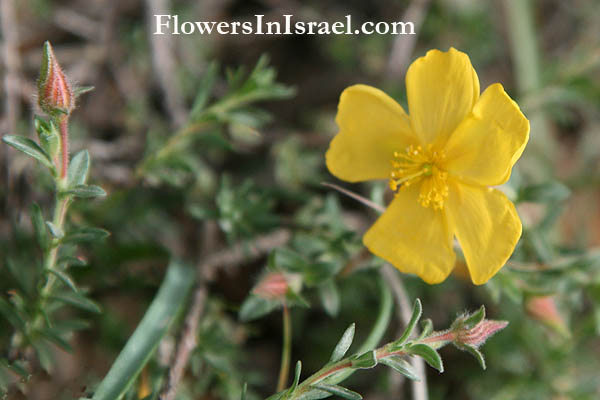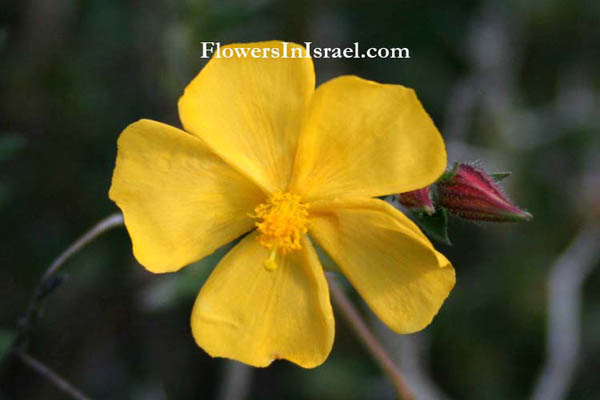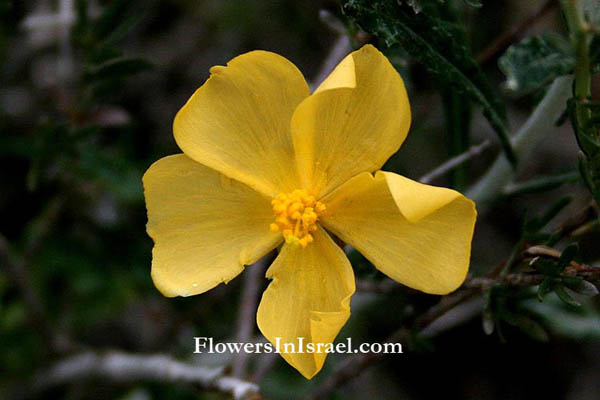Hebrew: לוטמית ערבית, Arabic: ورد الشمس
| Scientific name: | Fumana arabica (L.) Spach | |
| Synonym name: | Helianthemum arabicum Pers. | |
| Common name: | Arabian cistus | |
| Hebrew name: | לוטמית ערבית | |
| Arabic name: | ورد الشمس | |
| Plant Family: | Cistaceae, לוטמיים |

Location: Betah Mountain, Western Galilee |
| Life form: | Chamaephyte | |
| Stems: | 25 cm in height, prostate, ascending, much branched | |
| Leaves: | Alternate, ovate- to oblong-lanceolate, stipulate | |
| Inflorescence: | Solitary or loose racemes | |
| Flowers: | 5 Yellow petals; corolla 20-30mm | |
| Fruits / pods: | Capsules 6-8mm | |
| Flowering Period: | March, April, May | |
| Habitat: | Batha, Phrygana | |
| Distribution: | Mediterranean Woodlands and Shrublands, Semi-steppe shrublands, Montane vegetation of Mt. Hermon | |
| Chorotype: | Mediterranean | |
| Summer shedding: | Perennating |

Derivation of the botanical name: Fumana, Latin fumus, smoke, presumably referring to the nitrous odor of the roots when pulled from the ground. arabica, of Arabia.
Fumana thymofolia is up to 25cm, leaves opposite, stipulate; the petals are lemon-yellow, and corolla is 10-15mm; the pedicels are much longer than the subtending bracts; the capsule is 4-4mm, 4-6 seeded. 
|